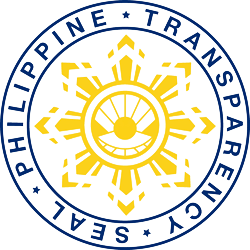Secretary General of the ASEAN Japan Centre (AJC), Mr. Fujita Masataka will present the results of AJC’s study on resilient global value chains (GVCs) to Philippine exporters during the National Export Congress (NEC) on December 3, 2020. The AJC is an intergovernmental organization established in 1981 to strengthen economic partnerships between Asean member-states and Japan in the areas of trade, investment and tourism.
There were a series of calls at the international and regional levels for strengthening and rebuilding value chains since the outbreak of the Covid-19 pandemic. These included “G20 Actions to Support World Trade and Investment in Response to COVID-19” endorsed on May 14, 2020, and the “Hanoi Plan of Action on Strengthening ASEAN Economic Cooperation and Supply Chain Connectivity in Response to the COVID-19 Pandemic” on June 19, 2020.
In response to this, the AJC conducted a study on “Resilient Global Value Chains for Asean and its Relationship with Partner Countries: A way to Mitigate and Adapt to the Economic Impacts of COVID-19.” The study calculated the degree of risks of value chains to external shocks and identified which industries tend to be more vulnerable to risks.
In the study, the AJC considered two types of GVC risks—risks that affect the upstream part of GVCs (supplier market concentration) and those that affect the downstream part of GVCs (buyer market concentration).
The more concentrated the market is, the more vulnerable it is to the disruption of chains. In the case of the Philippines, both supplier and buyer markets are generally, not much concentrated, leaving the country with the opportunity to expand its suppliers’ base and find more buyers to strengthen resilience of their GVCs.
In the suppliers’ market, the Philippines faces some concentration in three out of 22 industries, including electrical and general machinery. On the other hand, in the buyers’ market, exports of mining faces medium degree of concentration and other nine industries face low concentration.
Risk intensity of the Philippines’ supplier market concentration and buyer market concentration of its GVCs by six levels.
Regarding the relationship with Japan, Japanese suppliers in Philippine exports are dominant in four industries (electrical and general machinery; precision instruments; motor vehicles and other transport equipment; and metals and metal products) out of 22 industries, while Chinese suppliers are dominant in seven industries. In the buyer market, Japanese buyers of Philippine products are concentrated in two out of 22 industries: mining and motor vehicles.
Trade and investment relationships affect GVCs. Taking into account the trade and investment patterns, Japan and the Philippines can strengthen GVCs. For trade, the Philippine exports to and imports from Japan is almost balanced with the electronics being the main trading business. This is where the horizontal division of labor is created. With other major trade partners, the Philippines has either huge trade deficit or trade surplus. Investment by Japan in both manufacturing and services covering many sectors also helps the Philippines establish GVCs with Japan.
Japan and the Philippines can strengthen GVCs through trade and investment
The study presents five policy suggestions to make global supply chains more resilient. First, is to implement and utilize policy measures and actions related to production and supply chains (GVCs). Japan and all Asean member-states have issued policy measures to mitigate the impacts and save the companies. For example, Japanese measures include a program to diversify supply chains of Japanese companies in ASEAN. Philippines should inform Japanese companies of government measures that they can take advantage of to sustain businesses.
Second, improve risk management by the private sector. There is increasing recognition of the importance of and increasing demand for risk management. As a country prone to natural disasters, the Philippines should take advantage of experiences in risk management for producing goods and services. Philippine BPO/BPM should be more digitalized, otherwise certain areas like call centers may lose competitiveness under the new normal.
Third, push strongly for digital transformation by both public and private sectors. What is emerging among Asean member states as well as their partner countries as a result of the impact of the pandemic is a move towards more digitalization. The Philippines should continue to support the country’s digital transformation by providing the necessary telecommunication infrastructure and funding facility for IT equipment, and by facilitating e-commerce and e-payment. The Philippines and Japan can move together and establish digital networks, or value chains, laden with digital technologies like IoT, or internet of things.
Fourth, promote new and crisis-resistant industries. There is a need to shift attention to a different set of industries which are required for successful establishment of the Fourth Industrial Revolution. These industries should also be risk-resistant, ranging from life sciences, agro-food industries, transport equipment such as electric cars, business services such as Fintech, telemedicine, personal services for the elderly, ICT, energy, chemistry, and environmental conservation, to technical textiles and robotics. Philippine and Japanese companies may have common interests in these new industries where Japanese companies may form joint ventures or take an equity investment.
Fifth, reconsider company strategies for international production. Foreign direct investments or FDI activity is likely to decline in significant magnitudes in 2020 – by as much as 40 per cent in the world and 30–45 per cent in Asia. Japanese FDI outflows declined by 30 per cent in the first six months of 2020. Philippines should provide an environment conducive to the operations of Japanese companies through, for example, assisting them to maintain and rebuild more resilient GVCs.
While digitalization is stated as one of the strategies for a resilient GVC, it is also an essential component of each of the other strategies as digitalization is needed to: (1) improve production and supply chains as IT can reduce costs, and can make value chains more efficient; (2) manage risks since under a digital environment, risks can be monitored more efficiently; (3) create crisis resistant industries as many products can be linked to IoT. For example, smart fridges to check grocery freshness, smart shirts to check the heartbeat. And (4) digitalization can definitely help build on the Philippines’ competitive edge.
Mr. Fujita’s advice to exporters is “not to return to the previous level of resilience, but move to the level higher than before. We need to and we can rebuild stronger value chains.” ♦
Date of release: 23 November 2020



